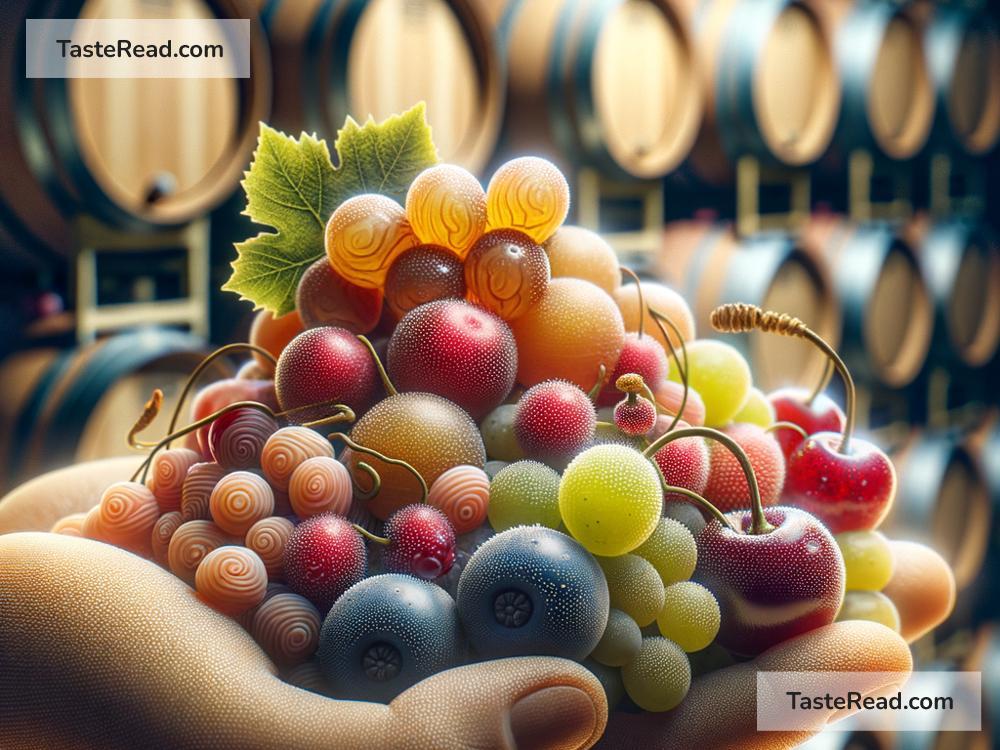How Fermentation Creates Umami Flavors in Fruits Used for Wines
Wine is one of the world’s oldest and most beloved beverages. From sparkling whites to rich reds, countless varieties exist to satisfy every palate. But have you ever wondered what makes wine taste so unique? One answer lies in the magic of fermentation and the creation of umami flavors in the fruits used to make wine.
If you haven’t heard of “umami” before, don’t worry—it’s a term that’s becoming more popular in food and drink conversations. Umami is often described as a “savory” or “meaty” taste, and it’s considered the fifth basic flavor alongside sweet, sour, salty, and bitter. It’s what makes some foods taste deeply satisfying and full of flavor.
But how does umami end up in wine, and what role does fermentation play in this process? Let’s dive into it, in simple terms.
What Is Fermentation?
Before we talk about umami, we need to understand what fermentation is. Fermentation is a natural process where microorganisms like yeast and bacteria break down sugars in food or drink. In wine production, yeast is responsible for converting the sugar in grapes (or other fruits) into alcohol. This process also creates carbon dioxide as a byproduct.
Fermentation is the key to transforming grape juice into wine. But it doesn’t just produce alcohol—it also changes the flavor. During fermentation, many chemical reactions occur that develop and deepen the taste profile of the wine. This is where umami flavors can begin to emerge.
What Is Umami, and Where Does It Come From?
Umami was first identified in the early 1900s by a Japanese scientist named Kikunae Ikeda. He discovered that certain foods, like seaweed broth, have a unique savory flavor caused by a compound called glutamate. Glutamate is a type of amino acid, which is a building block of proteins. Later, researchers found that other compounds, like inosinate and guanylate, also contribute to umami.
So where do these umami compounds come from? They naturally occur in many foods, including tomatoes, mushrooms, cheese, soy sauce, fermented items like miso, and even grapes. When fruits like grapes enter the fermentation process, the interactions between sugars, acids, yeast, and other microorganisms give rise to new compounds—including some that produce umami flavors.
How Fermentation Enhances Umami in Wine
During wine fermentation, yeast works hard to transform the sugars inside grapes (or other fruits like berries, apples, or plums) into alcohol. But fermentation does more than produce alcohol; it’s a complex process that enhances flavors and aromas.
Here’s what happens to umami during fermentation:
-
Breakdown of Proteins: Fruits naturally contain proteins, but these aren’t very noticeable until yeast and bacteria influence them during fermentation. The proteins begin to break down into amino acids like glutamate, which is a key contributor to umami flavor.
-
Formation of Byproducts: Yeast doesn’t just make alcohol; it also creates a wide range of byproducts, such as esters, acids, and compounds that affect taste and aroma. Some of these compounds complement umami or amplify its presence in the wine.
-
Malolactic Fermentation: In many wines, especially red wines, another type of fermentation called malolactic fermentation occurs after the primary fermentation. This process converts harsh malic acid (think green apple tartness) into softer lactic acid (similar to creaminess). Malolactic fermentation can enhance the wine’s roundness and bring out more savory, umami-like flavors.
-
Aging and Interaction: Even after fermentation, wines often go through a period of aging. During aging, the compounds in the wine continue to evolve and interact, sometimes amplifying the umami notes. Aging in oak barrels, for example, can introduce additional flavors like smokiness or nuttiness, which pair beautifully with the umami elements.
Fruits Beyond Grapes: A World of Flavor
While grapes are the star ingredient for most wines, other fruits that are fermented to create wine—like apples, plums, cherries, and berries—can also develop umami flavors. These fruits each contribute their own unique balance of sugars, acids, and proteins, which affects the fermentation process and flavor outcome.
For example:
– Cherry wines might carry a hint of umami alongside their natural tartness, giving them a bold and complex depth.
– Plum wines might have a smooth, savory element that complements their sweetness.
Fermenting these fruits showcases just how broad the umami spectrum can be, adding richness and complexity to fruit wines.
Why Umami in Wine Matters
Umami plays an important role in making wine flavorful and satisfying. It doesn’t dominate the taste but rather enhances it, creating a sense of balance and depth. Wines with noticeable umami pair excellently with food—especially savory dishes like roasted meats, cheeses, mushrooms, and foods with earthy flavors.
When you sip on wine, the umami compounds work harmoniously with other flavors like fruitiness, acidity, and tannins to create a multi-layered experience. This is why wines often taste even better when enjoyed alongside a delicious meal.
Conclusion
Fermentation is truly a magical process that transforms fruit into wine, adding layers of flavor and complexity along the way. Through the breakdown of proteins and the formation of new compounds, fermentation can create the savory umami tastes we love in wine. Whether it’s from grapes, cherries, or plums, the umami flavors in wine provide richness and balance, making every sip feel special.
The next time you enjoy a glass of wine, take a moment to think about the journey it went through—from fresh fruit to fermented drink. Cheers to the science and artistry of winemaking!


